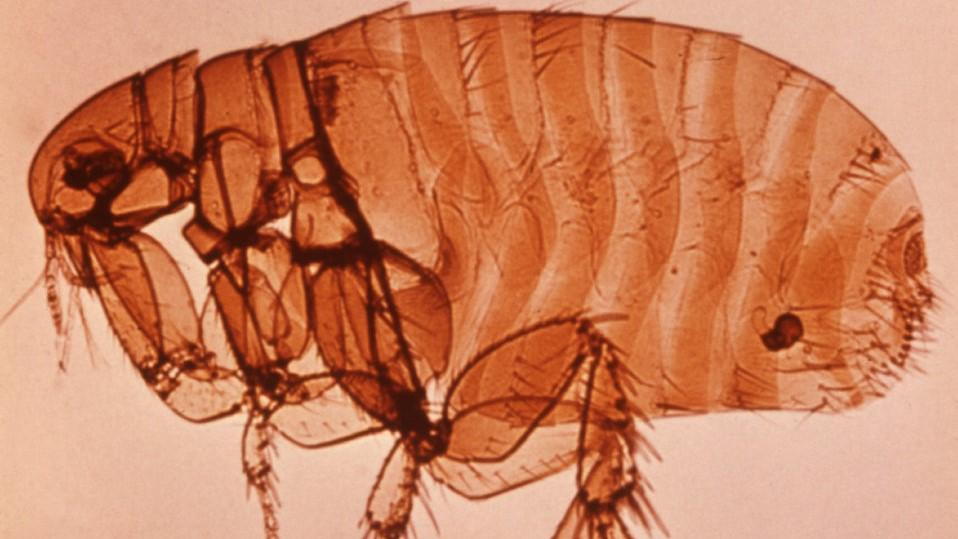Flea Infestations in Dogs and Cats

- posted: Aug. 25, 2020
Fleas
Just because summer is coming to an end, that doesn’t mean you should stop protecting your pet against fleas. While fleas love warm humid weather, pets can become infested with fleas any time of year. Learn more about these pesky insects and what you can do to protect your pet.
Chances are, if you’ve seen a flea on your dog, cat, rabbit or other mammal, it’s a cat flea: Ctenocephalides felis. Adult fleas spend most of their lives on the pet, but, when a female flea lays eggs (up to 50 eggs per day!), the eggs roll off of the pet and contaminate the environment. After 2-14 days, the eggs hatch into larvae or maggots. These larvae live for 4-18 days in carpeting, bedding, and even hardwood floors. After about 2 weeks, they spin a cocoon called a pupa and mature into adult fleas in as few as 3 days or they may stay dormant in this stage for up to a year. When the fleas emerge from their pupae, they will hop back onto any pets in the area. The full life cycle takes 10-30 days to complete. The pupal stage is relatively difficult to kill as many chemicals do not penetrate the cocoon. This is why it may take several months to get rid of an existing flea infestation.
If your pet has fleas, it is important to treat ALL pets in the household with a good flea preventative. Topical, chewable and collar options are available. Ask our staff about the best products for your pet’s needs. It is also helpful to treat the house—wash any bedding your pet uses, spray carpets, baseboards, pet beds, etc. with a flea spray that also kills eggs and larvae. Products like diatomaceous earth or borax sprinkled on carpets may also help by dehydrating eggs and larvae, but should not be the sole treatment. Bathing your pet may help soothe itchy skin and remove flea dirt from the coat, but flea shampoos are not effective for the long haul: most have little to no residual effect.
If your pet is suffering from allergies, he or she may need a visit to the vet. Many pets cause severe trauma to their skin due to being itchy. This is not only uncomfortable, but your pet may also develop secondary skin infections as a result. Pets often need medications to treat infection and quell the intense itch. Not all pets are allergic to flea bites: your pet may still have fleas even if she isn’t scratching. And, live fleas may be very difficult to spot on cats as they tend to groom them off. But that black peppery stuff in the coat is a tell-tale sign—it’s flea dirt or flea poop and means there are fleas somewhere.
Pets may also get tapeworms if they have a flea infestation. Part of the tapeworm lifecycle lives inside the flea. If a pet swallows a flea while grooming himself, the tapeworm will hatch and live in his intestine. Tapeworm segments are sometimes seen around the anus, in or on the stool, or on areas where pets have been sleeping—they look like pieces of rice. They may crawl or move if freshly passed. Tapeworms generally do not cause any symptoms in pets, but should be treated if found.
Finally, fleas can sometimes cause anemia, especially in very small, very young or very old pets. And, while rare in Pennsylvania, fleas carry diseases like bubonic plague (yes, it still exists in the US), typhus and, somewhat more commonly, bartonellosis or cat scratch fever.
As you can see, fleas are nasty critters carrying disease and making some pets miserable. It is much easier to prevent fleas than to try to treat an established infestation, but, Patton Veterinary Hospital can help protect your pet from fleas or treat existing problems associated with having fleas. There are many products out there, but some are more effective than others so chat with our staff about recommended products to keep your pet flea free year-round!
This blog brought to you by the Patton Veterinary Hospital serving Red Lion, York and the surrounding communities.
https://www.petsandparasites.org/resources/fleas-ticks-your-pet/
Location
Patton Veterinary Hospital
425 E Broadway
Red Lion, PA 17356
